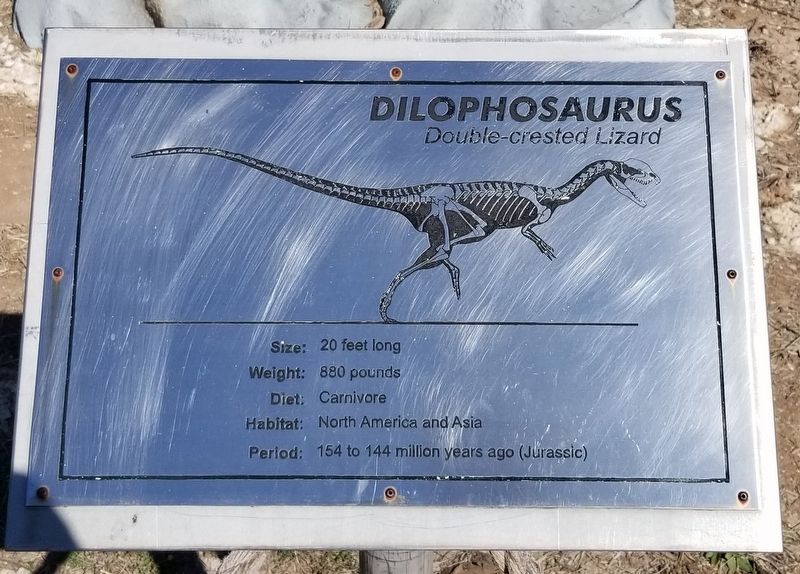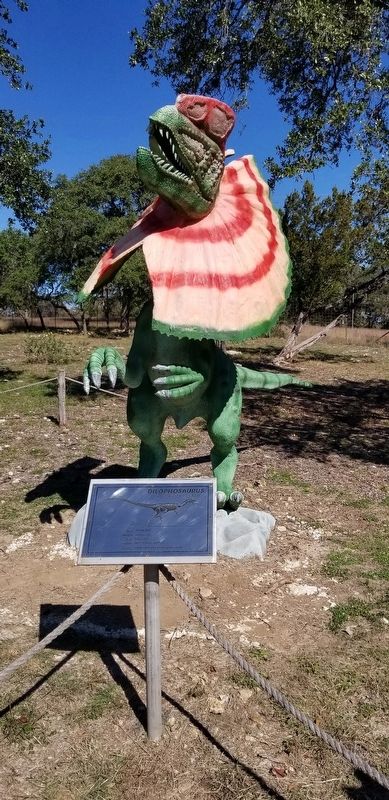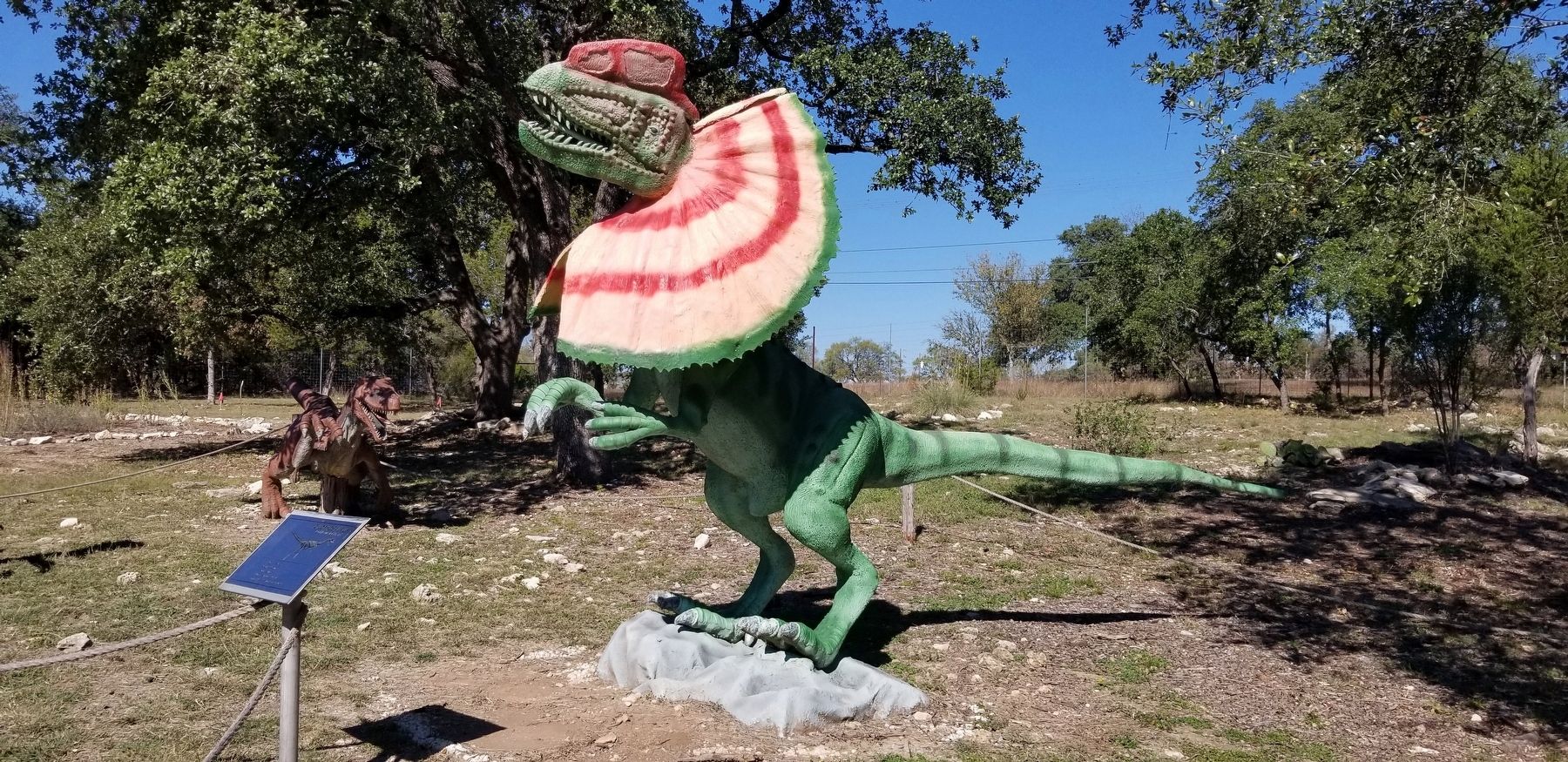Bandera in Bandera County, Texas — The American South (West South Central)
Dilophosaurus
Double-crested Lizard
Size: 20 feet long
Weight: 880 pounds
Diet: Carnivore
Habitat: North America and Asia
Period: 154 to 144 million years ago (Jurassic)
Erected by Bandera Natural History Museum.
Topics. This historical marker is listed in these topic lists: Animals • Paleontology.
Location. 29° 43.874′ N, 99° 4.056′ W. Marker is in Bandera, Texas, in Bandera County. Marker can be reached from Old San Antonio Road, 0.1 miles north of State Highway 16. The marker is located on the grounds of the Bandera Natural History Museum. Touch for map. Marker is at or near this postal address: 267 Old San Antonio Road, Bandera TX 78003, United States of America. Touch for directions.
Other nearby markers. At least 8 other markers are within walking distance of this marker. Deinonychus (here, next to this marker); Gastornis (a few steps from this marker); Mastodon (within shouting distance of this marker); Stegosaurus (within shouting distance of this marker); Pachycephalosaurus (within shouting distance of this marker); Indricotherium (within shouting distance of this marker); Smilodon (within shouting distance of this marker); Torosaurus (within shouting distance of this marker). Touch for a list and map of all markers in Bandera.
Regarding Dilophosaurus. There is a entrance fee to visit the Bandera Natural History Museum which allows you to walk through the dinosaur exhibits and markers.
Also see . . . Dilophosaurus.
Dilophosaurus (/daɪˌloʊfəˈsɔːrəs, -foʊ-/ dy-LOHF-o-SOR-əs) is a genus of theropod dinosaurs that lived in what is now North America during the Early Jurassic, about 193 million years ago. Three skeletons were discovered in northern Arizona in 1940, and the two best preserved were collected in 1942. The most complete specimen became the holotype of a new species in the genus Megalosaurus, named M. wetherilli by Samuel P. Welles in 1954. Welles found a larger skeleton belonging to the same species in 1964. Realizing it bore crests on its skull, he assigned the species to the new genus Dilophosaurus in 1970, as Dilophosaurus wetherilli. The genus name means "two-crested lizard", and the species name honors John Wetherill, a Navajo councilor. Further specimens have since been found, including an infant. Footprints have also been attributed to the animal, including resting traces. Another species, Dilophosaurus sinensis from China, was named in 1993, but was later found to belong to the genus Sinosaurus. Source: Wikipedia(Submitted on January 3, 2022, by James Hulse of Medina, Texas.)
Credits. This page was last revised on January 3, 2022. It was originally submitted on January 3, 2022, by James Hulse of Medina, Texas. This page has been viewed 116 times since then and 5 times this year. Photos: 1, 2, 3. submitted on January 3, 2022, by James Hulse of Medina, Texas.


